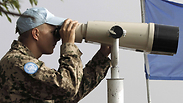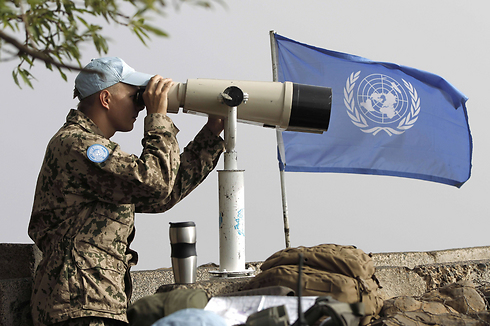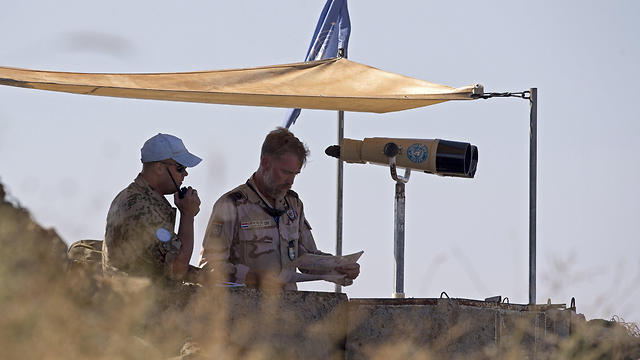
UNDOF force
צילום: AFP
Report: Syria rejected, Israel accepted UN request to install radars on border
Channel 10 says Israel approved request by United Nations Disengagement Observer Force in buffer zone to utilize systems capable of warning of explosive devices in the area; Israel says Damascus was unprepared to allow use of radars against its forces or Assad-affiliated militias.
A request submitted by United Nations peacekeeping inspectors stationed in the Golan Heights to Syria and Israel seeking permission to install new technological systems in the area was rejected by Damascus, according to a report on Wednesday evening on Channel 10.
The United Nations Disengagement Observer Force (UNDOF) reportedly asked both Israel and Syria a few months ago to place systems inside the buffer zone between the two countries that could warn against explosive devices in the area.
According to assessments in Israel, which agreed to the change, Syria was unprepared to allow UN inspectors to use the radars in order to monitor activities carried out by the Syrian army or other militias affiliated with Syrian President Bashar Assad’s regime at the border area.
UNDOF was established by Security Council resolution 350 in May 1974—a year after the 1973 Yom Kippur War between Israel and Egypt and Syria—to maintain the ceasefire between the countries, supervise the disengagement of Israeli and Syrian forces and supervise the buffer zones between the warring parties.
Initially, UNDOF was to man the areas evacuated by the IDF after the separation agreement, to transfer territory to the Syrian army and to create a buffer zone. Eventually, its forces continued to maintain the ceasefire between Syria and Israel in the Golan Heights, which Israel captured from its northern neighbor in the 1967 Six-Day War.












